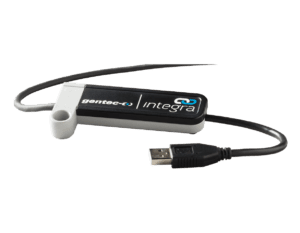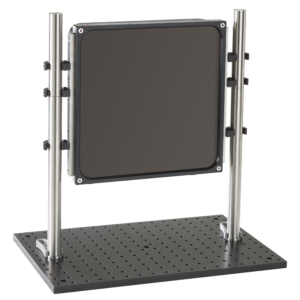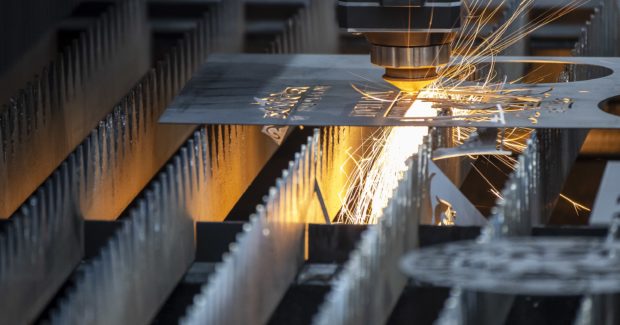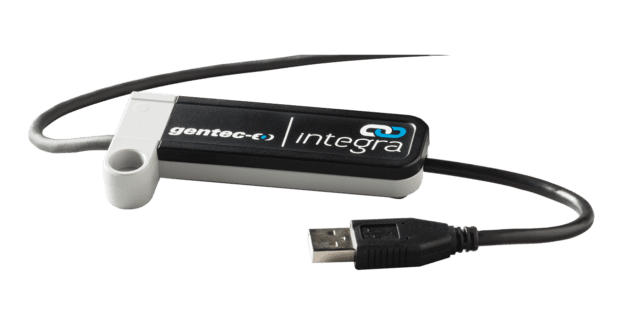Taking Laser Power Measurements is Simple and Fast
Measuring laser power in laser metal cutting systems to improve manufacturing process.
Posted: August 23, 2022
TOWARD ZERO DEFECTS

Have you ever run a cutting job and had great results, then ran it again a week later, only to have to go in and knock the slag off of every other part? Even if you put in a fresh nozzle, there are numerous ways the outcome of a job can be affected. There is one input process variable that affects laser cutters more than you might think: laser power.
Let’s Talk Real Power
What is laser power? It’s the number that you choose in the job settings panel before starting a job. But there’s a lot that goes into determining laser power, and the laser power that you choose in your machine settings may not be the actual laser power at the output of the cut head. Laser power is the brightness of the beam of light as it exits the cut nozzle and enters the workpiece. Fluctuations in this brightness will affect the results of your cut job.
Laser cutting machines typically don’t measure laser power. When you enter a laser power setting, it’s kind of like asking the machine nicely if it could provide that much power. The machine will do its best at achieving that power, and not going too far over or under. But, due to limitations in how laser sources are made, how output power is controlled, environmental conditions, and component wear, the actual laser power could be quite different from your requested power setting.
For example, you enter a setting of 2000 W. Your fiber-coupled diode laser has been around the block, and a couple of diode strings are burnt out. The machine can adjust for this, but laser power as it leaves the oscillator can still be a little degraded. Your collimator also has a few hours on it, and this reduces power even more. Finally, although the nozzle looks clean, there is some contamination on the inside that blocks a part of the laser. At the output, your laser is only 1700 W, and you start to see more slag, or incomplete penetration.
How would you even know that the actual power is different than the requested power? The machine can’t tell you because it doesn’t have a way of knowing. It only measures power going into the laser, not coming out. Any number of issues that exist between the laser source and your cutting head will result in incorrect power delivered to the workpiece.
You can measure laser power by placing a laser power meter at the output of the laser, where the workpiece would go — which is what is important to you. Measuring laser power at the output, and not the input, ensures that all components of the optical chain are included when making your measurement.
Once the measurement is taken, it can be recorded in your process log as a proof the laser was operating according to parameters before the job was started. It could also be compared to a previous working value to ensure that the laser and your optical components have not drifted or deteriorated over time. Just add a laser power check to your start-up checklist.
How to Actually Measure Laser Power Output
What does taking a laser power measurement actually consist of? There are two major types of laser power meter, which relate to how the power meter is cooled.
- For High-power Laser
First, relatively small air-cooled laser power meters are placed inside the machine and exposed to the laser for a short period, typically around 5-to-8 seconds. The measurement is displayed, and the meter can be removed and left to cool before it can take another measurement. These meters can measure up to about 10 kW.
- For Very High-power Lasers
The second type is a water-cooled laser power meter. Because these meters are actively cooled, they can take much more power, and can run continuously. However, they are bulkier and must be connected and disconnected from a cooling circuit when moved.

These types of meters can be integrated into a cutting machine for permanent installation and can even be connected to your machine’s computer. And because they can be operated constantly, you can take long-term acquisitions of laser power if you think that your laser may be changing over time or if you think some components are overheating.
The laser meter itself isn’t placed at the focal point of the laser because the laser would cut right through the meter. Instead, it is placed below the focal point, where the laser beam diverges and becomes larger. Laser power meters can handle high power but can’t always handle high power density. A technician can work with you to determine where exactly the laser power meter should be placed, and help you choose the right measurement solution for your laser source.
With an integrated power meter, measurements can be automated to help achieve your Industry 4.0 goals. Connectivity is typically provided over USB, RS232, Ethernet, or even wireless protocols such as Bluetooth. Power measurements are performed using a simple command system and can be interfaced with your automation software, simplifying the data acquisition process.
High-accuracy Measurements Require Regular Recalibration
To ensure your power meter is performing correctly, the manufacturer will calibrate the meter against traceable standards. Different laser types require different calibrations, so keep that in mind if you are using both fiber and CO2 lasers in your shop. The type of calibration is usually specified before you purchase a laser power measurement instrument. Also, the meter itself will need to know which type of laser it is measuring. You can typically select the laser wavelength easily in the power meter interface.
It‘‘s also recommended to recalibrate laser power meters periodically to ensure the measurements remain correct and to guarantee the meter is working well. This calibration interval depends on the needs of your quality control system. Some industry standards require periodic calibration; some of your clients may require it as well.
Laser power measurements are an important part of a metal fabrication quality control system. Taking a laser power measurement is simple and fast and can be integrated into a pre-start checklist or anywhere in a quality control process. Ensuring laser quality before a job is started will help you to save time, reduce scrap, and eliminate expensive headaches.
Subscribe to learn the latest in manufacturing.
















